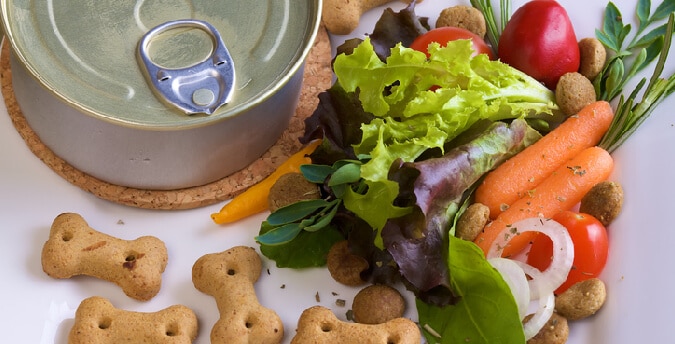Best Vegetables to Add To Dog Food

Although dogs are primarily carnivores, that doesn’t mean that they can’t benefit from the delicious nutrients that vegetables have to offer. Not only is including veggies in your canine friend’s meal a great way to bulk up their diet with some yummy vitamins but it might also be a great way to save up on the cost of dog food as we all know vegetables are great for adding bulk and they’re usually quite cheap. So let’s take a look at the hows and what of the best vegetables to add to dog food.
What Are The Benefits of Adding Vegetables to Your Dog’s Food?
Dogs get most of their nutritional needs from pure protein. In fact, most dogs don’t even tolerate fat very well, being predisposed to pancreatitis and a variety of other conditions if they ingest too much too often. And although a dog’s digestive system is going to be very different from a human’s, which means you should always double-check before giving your furry friend any human food, vegetables can be extremely beneficial for dogs.
For one they can supplement the amino acids found in meat with other important nutrients such as calcium, potassium, and magnesium. Dark leafy greens will also add phytonutrients that have antibacterial properties and that can also help combat aging and even cancer.
Additionally, vegetables can help your dog with any intestinal issues they might have as the added fiber can work wonders even for a dog’s digestion.
What Vegetables Should You Not Feed Your Dog?
In terms of what shouldn’t go in your dog’s diet, we advise that you steer clear of garlic, onion, and avocados. Also, be on the lookout for contraindications if you’re planning on adding fruit into the mix.
Starchy veggies like potatoes can pose issues as well and cabbage family ones like broccoli or kale can also have an impact on the thyroid.
Whatever you end up feeding your pooch, keep in mind that dogs are carnivores by nature and that despite the wonderful benefits that added veggies can bring to their lives, their primary source of nutrition should always be meat. Never make veggies more than 10% of your dog’s diet as this can disrupt their nutrient balance and create deficiencies.
Other foods to avoid are mushrooms, rhubarb, cherries, apricots, and grapes.
What Veggies Should You Feed Your Dog?
Here are the top vegetables you can feed your dog safely while reaping some serious health benefits.
Carrots
Rich in Vitamin A and potassium carrots are great for dogs cooked or raw.
Spinach
An amazing source of potassium, magnesium, vitamin C and Vitamin K, spinach is a great way to load up the nutrients in your canine companion’s next meal
Butternut Squash
Great for encouraging immune and cardiovascular function, butternut squash is easy to include in a meal and many dogs find it quite yummy.
Broccoli
Although it’s a part of the cabbage family and should be used sparingly so as to not disrupt thyroid function, a bit of broccoli can work wonders by not only adding a slew of vitamins and minerals but also improve bone density and heart health.
Celery
Full of antioxidants, celery will contribute to a longer healthier life for Fido.
How Should You Include Vegetables In Your Dog’s Diet?
There are a few ways you can go about including veggies in your dog’s diet.
Raw
One option is to go raw. Some veggies like celery or carrots are going to be a great treat and provide some crunchy fun in the meantime.
Boiling and Pureeing
Probably the easiest way to make sure that your dog keeps benefiting from a steady vegetable-inclusive diet is to boil and puree your veggies. Although you will be losing some nutrients in this process, you can freeze extras and always have it on hand for adding to a regular dog bowl. What’s more, this also makes them easier to digest and ingest which increases nutrient absorption.
